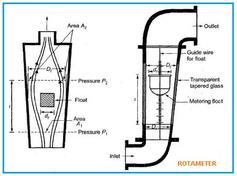Coriolis Mass Flowmeter: Advantages and Disadvantages
Advertisement
This article explores the pros and cons of using a Coriolis mass flowmeter. We’ll delve into how it works and weigh its benefits against its drawbacks.
What is a Coriolis Mass Flowmeter?
At its core, a Coriolis mass flowmeter utilizes the principle of “swinging” to measure flow. Here’s a breakdown:
- Vibrating Tubes: The meter contains tubes that vibrate as fluid flows through them.
- Twisting Action: The flow of fluid causes these tubes to twist, and the amount of twist is directly proportional to the fluid’s mass flow rate.
- Measurement: Sensors within the meter measure this twist, converting it into a linear flow signal.
- Versatile Applications: These meters are used across a wide range of applications, measuring the mass flow of liquids like ammonia, acids, water, and various chemicals, as well as gases and vapors.
- Density Independence: A key advantage is that the measurement isn’t affected by changes in fluid density, as it directly measures mass flow.

Advantages of Coriolis Mass Flowmeters
Here are the key benefits you can expect from a Coriolis mass flowmeter:
- True Mass Flow Measurement: Provides direct measurement of mass flow, which is often more critical than volumetric flow.
- Multi-Variable Measurement: Can simultaneously measure temperature and density in addition to mass flow.
- High Accuracy: Offers very high precision for both mass flow and density readings.
- Large Line Size Compatibility: Now available for larger line sizes, up to 14 inches.
- Sanitary Applications: Suitable for use in sanitary processes where cleanliness is essential.
- High Reliability: Known for their robust and dependable performance.
- Unaffected by Fluid Properties: Measurements are not influenced by changes in temperature, pressure, or viscosity.
- Simplified Installation: Does not require specific inlet or outlet sections for proper function.
- Bidirectional Flow: Can measure flow in both forward and reverse directions.
- Optimized Measurement Range: Offers flexibility to optimize the measurement range for specific flow rates or density.
- Self-Draining: Designed for automatic drainage, reducing maintenance.
Disadvantages of Coriolis Mass Flowmeters
Despite their advantages, there are some drawbacks to consider:
- Sensitivity to Gas Inclusions: The meter’s accuracy can be compromised by the presence of gas bubbles within the fluid.
- Vibration Sensitivity: Improper installation can lead to inaccurate readings due to vibration.
- Limited Material Options: The construction of the meter is restricted to a small selection of materials.
- Nominal Diameter Limits: Has limitations in the maximum nominal diameter for its top section.
- High Initial Cost: Can be more expensive than other types of flowmeters.
- Size and Cost for Larger Lines: Becomes expensive and difficult to handle for line sizes greater than 4 inches.
- Challenges with Gas Flow: Measuring gas flow can be difficult due to the low density of gases.
- Pressure Drop: Bent tube meters may experience a pressure drop.
In conclusion, Coriolis mass flowmeters offer many significant benefits, particularly when accurate mass flow measurement is crucial. However, it’s essential to be mindful of their limitations and suitability for specific applications.
Advertisement
 T&M
T&M 






